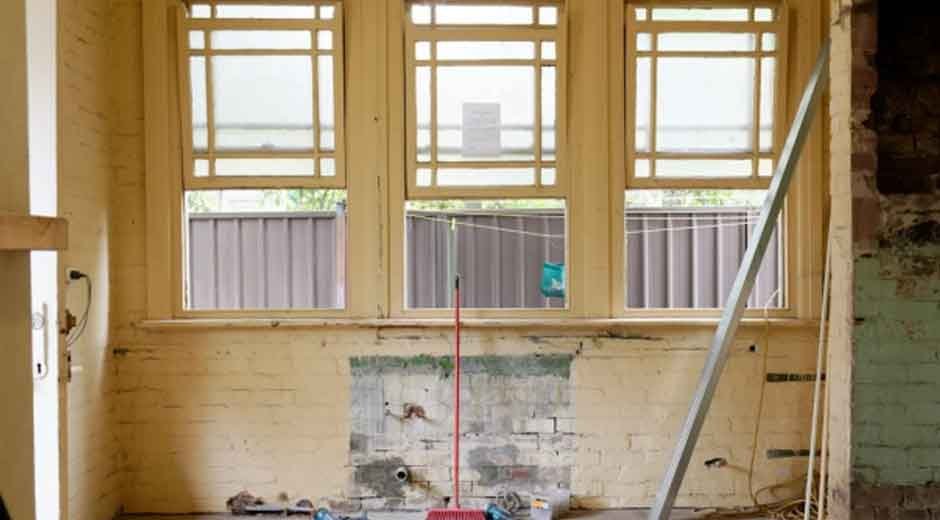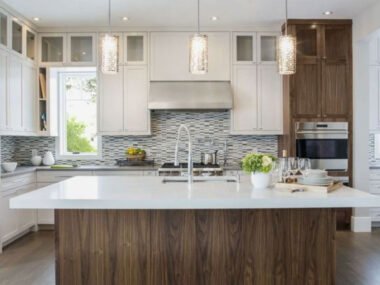Ever start moving furniture around and suddenly convince yourself the entire house needs to be redone? You begin with one chipped tile or a leaky faucet, and next thing you know, you’re deep in paint swatches, budget spreadsheets, and conversations about “open concept” like you’re pitching a Netflix renovation show. Even a minor fix can unleash a domino effect of upgrades, each one revealing another thing you didn’t realize bothered you until now. In this blog, we will share what you need to think about before starting a home remodel—so you don’t end up with empty walls, a drained bank account, and deep regret.
Every Detail Is a Decision
The fantasy of a home remodel often centers on a single outcome—usually a standout room. Maybe it’s the spa-style bathroom. Maybe it’s the dream workspace. For many, it’s the kitchen, which somehow becomes the emotional center of the house during a remodel. Everyone wants function, flow, and beauty—and they want it to make cooking feel less like a chore.
But wanting a better kitchen and knowing how to build one are two different things. If you’re planning to upgrade that part of the house, be ready for more than appliance shopping. Layout, cabinet depth, lighting, ventilation, countertop materials—none of it picks itself. If you want to pursue a custom kitchen as part of your remodel, expect a different kind of involvement. It’s not just about choosing finishes. It’s about how you use the space, how often you cook, how many people gather there, and what kind of storage fits your habits. Custom means tailored, and tailored means you have to know your measurements, your routines, and your limits.
These decisions might seem small in isolation. But they pile up fast. You’re not just picking tile—you’re picking grout color, edge profiles, faucet reach, and door handles. Each decision shapes the next. It’s a domino effect that quickly adds time, cost, and stress if you’re not organized.
The Vision Needs Limits
It’s easy to get swept up in inspiration. We live in a world where Pinterest boards, YouTube tutorials, and influencer walk-throughs make it seem like everyone is two weekends away from perfection. Social media sells a lifestyle where every room glows, every fixture is matte black, and every remodel wraps up just in time for a professionally styled reveal party.
But behind every stunning video is a team, a crew, and a lot more time and money than most people want to admit. Real remodeling happens in messes. It drags on. It costs more. It tests your patience and sometimes your relationship. So before swinging a hammer, define the limits of your project—your budget, your timeline, your disruption tolerance—and revisit that definition often.
Scope creep is real. You start fixing the bathroom, and suddenly you’re tearing up floors across the entire house. Be clear on what’s getting done and what’s staying put. If the floor plan doesn’t need to change, don’t touch it. If the plumbing works, leave it. The more you resist unnecessary changes, the more you stay in control.
Budgeting Is More Than a Math Problem
Most people approach remodeling budgets like they’re planning a trip: figure out how much it should cost, then try to hit that number. But construction doesn’t work like travel. The initial estimate is a draft. There will be delays. There will be changes. Something will go over. And if you budget to the edge, every shift becomes a crisis.
So instead, budget for three categories: what it should cost, what it could cost, and what you’re willing to stretch toward. Set a hard stop, then give yourself a 10–20% cushion for surprises—because there will be surprises. Rotten framing. Outdated wiring. A subfloor that turns out to be half dust and wishful thinking. These are not rare. They’re standard.
Also, labor costs vary wildly depending on location, season, and demand. In 2024, construction materials are still experiencing volatility, and labor shortages haven’t resolved in most regions. Contractors are booking further out, charging more, and working under tighter schedules. That’s the backdrop for your remodel—so plan for reality, not idealism.
Living Through It Is Its Own Challenge
There’s a unique kind of madness that comes from remodeling while still living in the house. Dust gets into your closet. Your stove ends up in the hallway. Your dog barks at contractors every day for two months. It wears you down in ways you won’t anticipate.
If possible, remodel in stages so you’re not losing access to every room at once. If the kitchen is down, make a meal plan that doesn’t involve cooking. Set up a temporary space for daily routines. Try to keep at least one bathroom untouched. Protect a “quiet zone” that stays clean and useable—because you’ll need that space more than you think.
Communication matters, too. Talk with contractors about work hours, access needs, and daily updates. Lack of information leads to stress. A five-minute chat each morning can prevent hours of frustration later.
And if you’ve got kids or pets, figure out early how you’re going to manage their schedules, safety, and sanity during the chaos. A remodel isn’t just a construction project. It’s a test of household logistics.
Finish Lines Are Soft Deadlines
Every remodel has two end dates: the one you plan for and the one that actually happens. Something will push the project back. A delay in materials, a last-minute change, or weather conditions that no one predicted. The more flexible your timeline, the less stressful the project becomes.
Don’t tie the remodel to a major life event unless you’re ready for chaos. Finishing before a new baby arrives? Risky. Trying to complete it before hosting Thanksgiving? Dangerous game. The less pressure you attach to the finish line, the more likely you are to survive the process without losing sleep—or your temper.
And even when the remodel is “done,” there’s usually a punch list. Touch-ups. Paint fixes. Trim that needs adjusting. That last 5% takes longer than it should. Be patient. Pushing for perfection on day one will only leave you disappointed.
Remodeling doesn’t deliver instant transformation. It delivers gradual, sometimes maddening progress. But if you plan well, stay clear on your priorities, and expect the unexpected, it can also deliver a home that feels more aligned with how you live—and where you want to grow.










